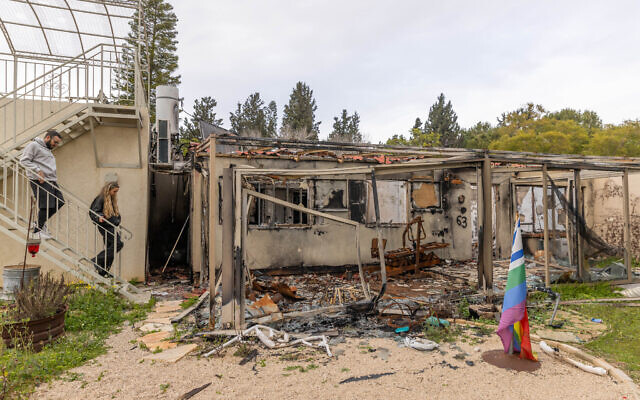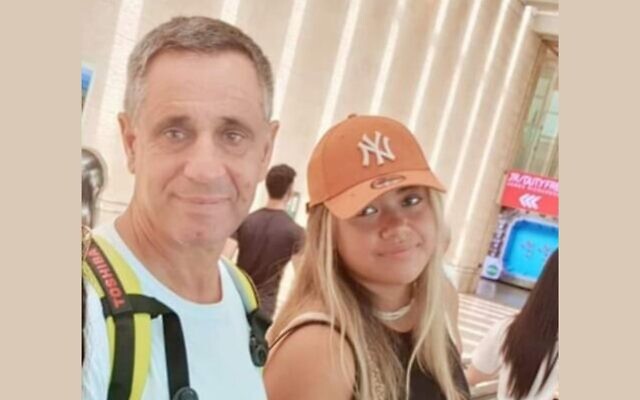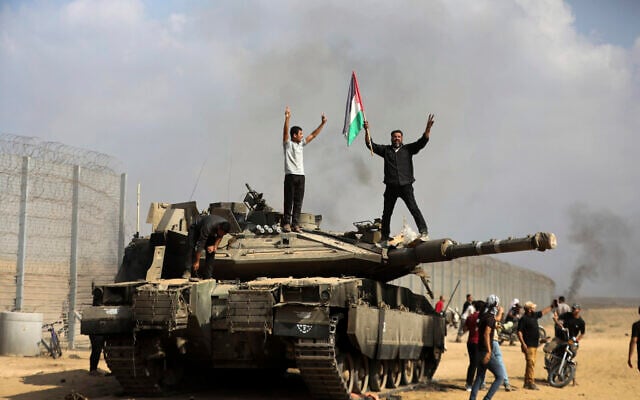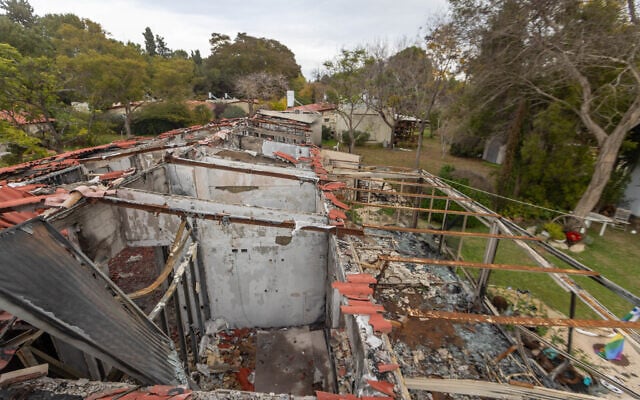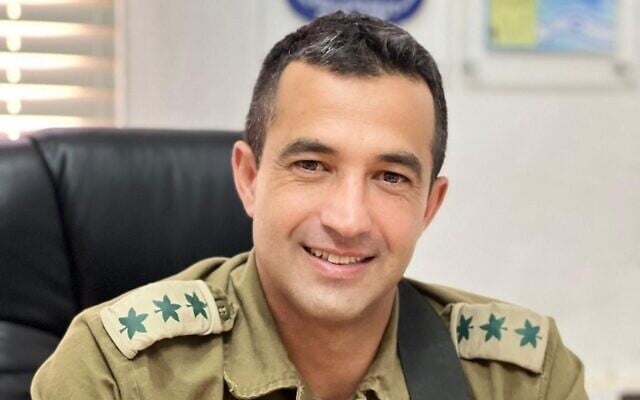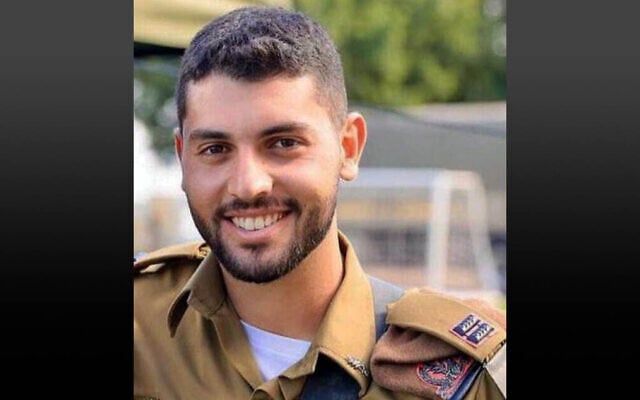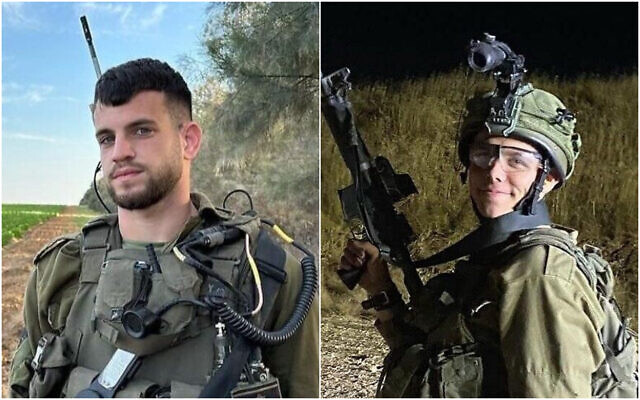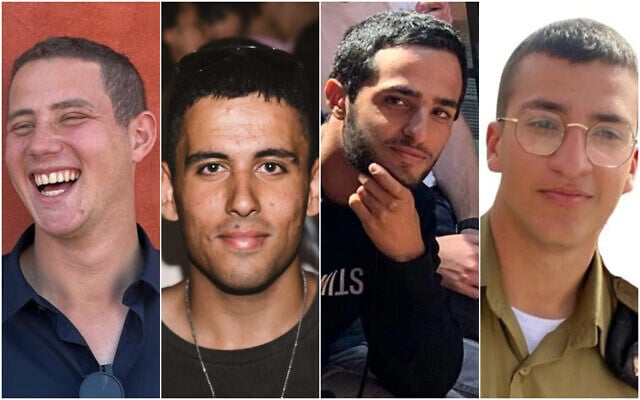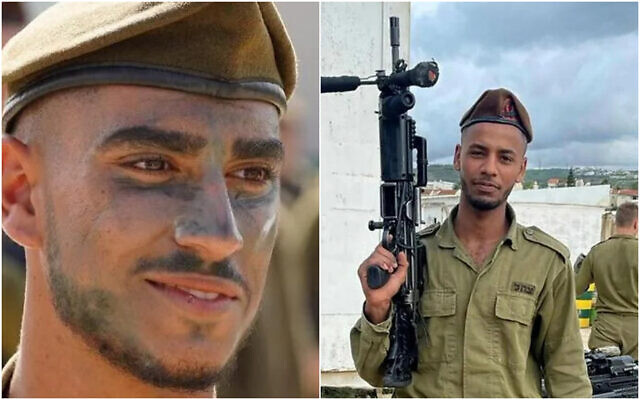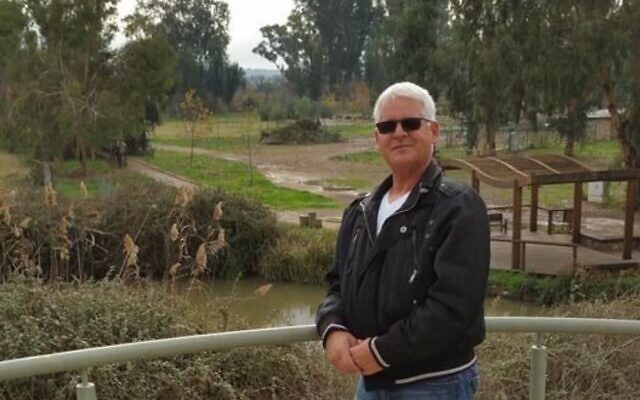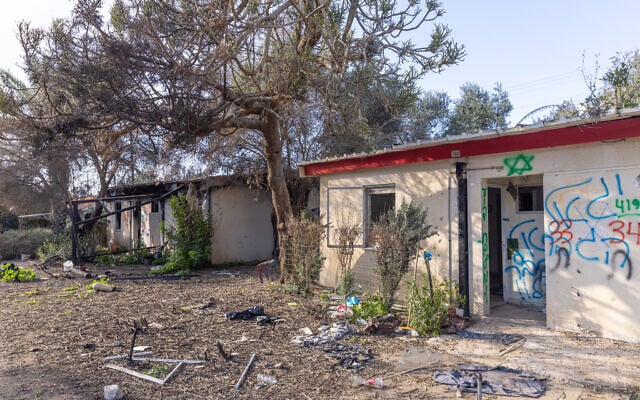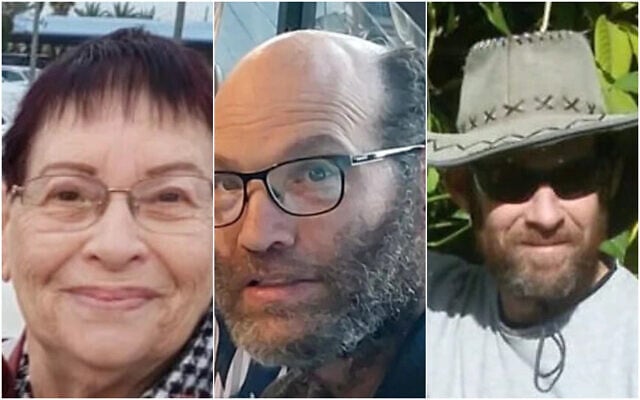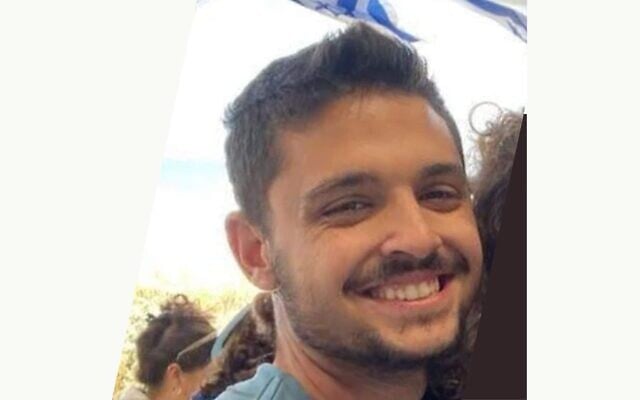


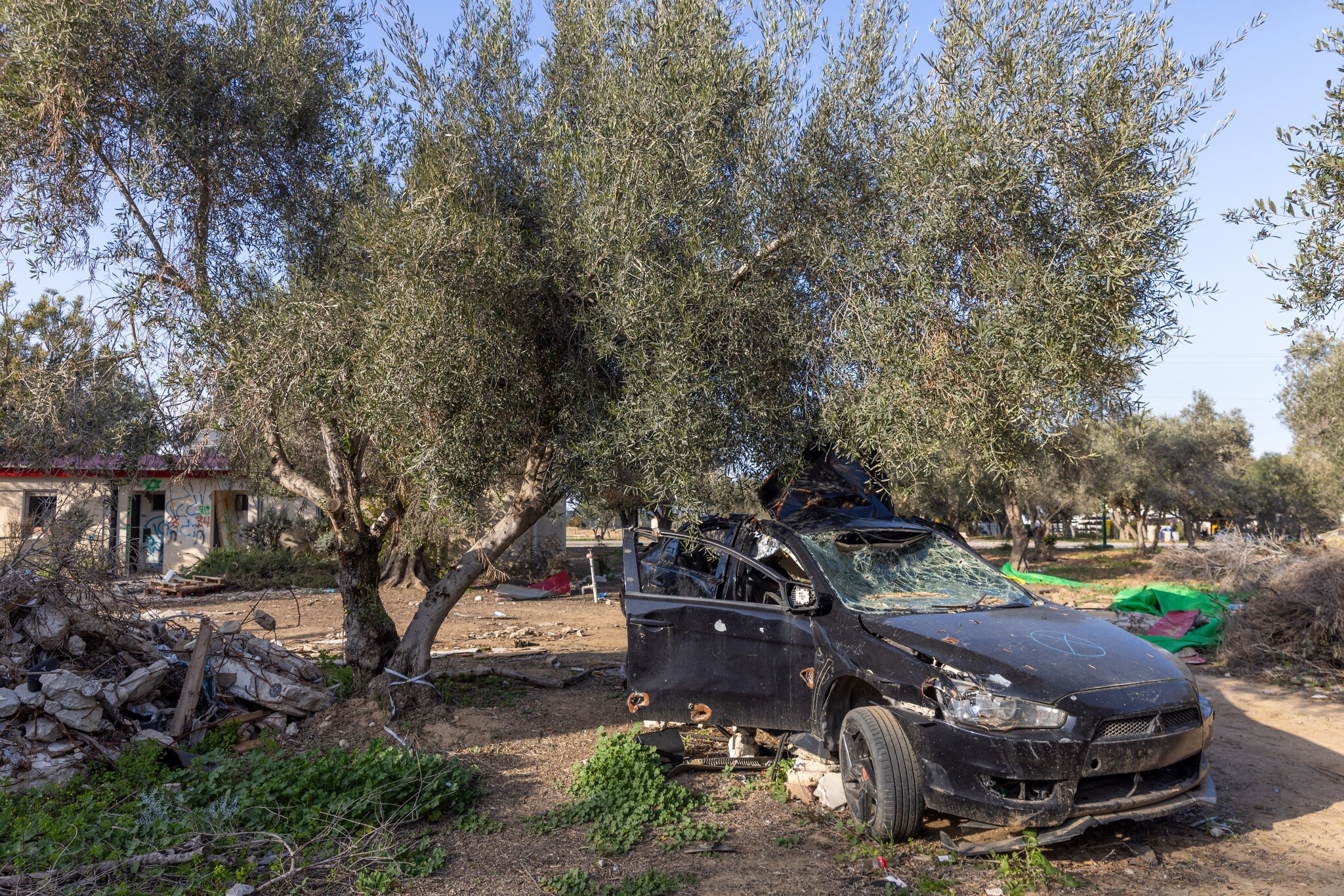
On the morning of October 7, 2023, during the Hamas-led onslaught on Israel, some 150 terrorists reached the Gaza border community of Kibbutz Nirim, where they murdered five civilians and abducted five others.
Israeli soldiers stationed on the border, along with the commander of the Gaza Division’s Southern Brigade who rushed to the scene, made a heroic stand and delayed the entry of terrorists to the kibbutz by several hours. But later that morning, the few troops who survived the first wave of terrorists were dispatched to other areas under attack, leaving Nirim vulnerable.
The army’s backup forces did not arrive until hours later, and residents were forced to fend for themselves as the terrorists moved from home to home, brutalizing, massacring and kidnapping civilians.
On Friday, the Israel Defense Forces presented its probe into the attack on Nirim — among its detailed investigations into some 40 battles and massacres that took place during Hamas’s October 7 onslaught, when some 5,600 terrorists stormed across the border, killed some 1,200 people, and took 251 hostages to Gaza.
The probe highlighted the bravery of residents and other security forces who fought that day, preventing the terrorists’ advance into other areas of the kibbutz.
The probe concluded that the IDF “failed in its mission to protect” the residents of Nirim, mainly because the military had never prepared for such an event: an Israeli community being captured by terrorists, as well as a widespread attack on numerous towns and army bases simultaneously by thousands of terrorists.
In all, five civilians were murdered by terrorists in the kibbutz that morning: Gideon Babani, 66; Roi Popplewell, 53; father and daughter Doron Meyer, 58, and Mor Meyer, 17; and Oran Alfasi, 22.
Five others were abducted to Gaza: Yagev Buchshtav, 35, and his wife Rimon Kirsht Buchshtav, 34; Nadav Popplewell, 51, and his mother Channah Peri, 79; and Noralin Agojo, 60.
The three women were released by Hamas during a November 2023 hostage deal. Yagev and Nadav were murdered in captivity, and their bodies were recovered by the military.
Ten IDF soldiers and officers were killed in the attack on the Nirim area, including at a nearby army post. Six of the slain troops were abducted to Gaza, along with two other soldiers who were taken alive by the terrorists.
They include:
Col. Asaf Hamami, 41, the commander of the Southern Brigade, along with members of his team, Staff Sgt. Tomer Ahimas, 20, and Sgt. Kiril Brodski, 19, who were killed inside Nirim, and their bodies abducted to Gaza.
Cpt. Omer Wolf, 22, Staff Sgt. Shalev Dagan, 20, and Staff Sgt. Maru Alem, 20, were killed on the edge of the kibbutz; Staff Sgt. Benjamin Blai, 20, who was killed at the so-called White House IDF post next to Nirim, and with him Staff Sgt. Edan Alexander, who was abducted alive to Gaza.
And four members of a tank crew, deployed to the border, including commander Cpt. Omer Maxim Neutra, 21, driver Sgt. Shaked Dahan, 19, gunner Sgt. Nimrod Cohen, 19, and loader Sgt. Oz Daniel, 19, were all abducted to Gaza, though only Cohen is presumed alive.
The bodies of Ahimas, Brodski, and Dahan have been recovered in military operations in Gaza. The bodies of Hamami, Neutra, and Daniel remain held captive, alongside Alexander and Cohen who are presumed alive.
The probe into what happened at Nirim, carried out by Col. Elad Shushan — the commander of the 646th Reserve Paratroopers Brigade, and soon-to-be deputy chief of the 162nd Division — covered all aspects of the fighting in the kibbutz and surrounding area on October 7.
Shushan and his team spent hundreds of hours investigating the onslaught and battle at Nirim. The IDF said the investigators made visits to the scene and reviewed every possible source of information, including footage taken by terrorists with body-mounted cameras, residents’ text messages, surveillance videos, army radio communications, and interviews with survivors and those who fought to defend the kibbutz.
The Nirim probe was aimed at drawing specific operational conclusions for the military. It did not examine the wider picture of the military’s perception of Gaza and Hamas in recent years, which was covered in separate, larger investigations into the IDF’s intelligence and defenses.
The investigation team found that the IDF’s chain of command had collapsed in the area and that the forces struggled to construct an accurate picture of what was happening.
The arrival of Hamami and his team to Nirim as the onslaught began, along with other troops stationed on the border that morning, halted the advance of the terrorists during the first hours of the attack, the probe found.
“Alongside the systemic failures, the heroism of the soldiers who faced an impossible situation stood out. The company and the brigade commander’s team fought heroically to protect the kibbutz until they were killed. They engaged [the enemy] and did everything they could to fulfill their mission,” the investigators said.
Despite having far fewer forces than the Hamas invaders, the troops killed dozens of terrorists and “acted as expected of them,” the probe said.
Investigators also noted that the acts of armed civilians and the kibbutz’s local security team, along with an Air Force helicopter that opened fire in the area, caused the terrorists to eventually withdraw from Nirim at around 11:30 a.m.
Still, for several hours, Hamas terrorists captured sections of the kibbutz where they abducted and killed civilians. “The residents of the kibbutz heroically faced dozens of terrorists who besieged their homes, while they held the doors of their safe rooms closed and protected their families with a grave sense of helplessness,” the investigation team stated.
Of some 150 terrorists who attacked the Nirim area, including 80 who infiltrated the kibbutz, some 50 were killed by Israeli forces between the Gaza border and the community, and another 15 in the kibbutz.
The terrorists included 64 Hamas members, 40 Palestinian Islamic Jihad members, and another 50 unaffiliated Palestinians.
Before the onslaught, the Golani Infantry Brigade’s 51st Battalion was deployed to the Nirim area, including at a base near Kissufim and another camp next to an agricultural research and development center south of Nir Oz known as Mopdarom. Additionally, two tanks of the 7th Armored Brigade’s 77th Battalion and a Namer armored personnel carrier were stationed at another small post near Nirim, known as the White House.
In all, there were 182 combat soldiers and 57 combat support troops stationed in the area, defending Nirim and several nearby communities.
At 5:28 a.m. on October 7, the troops outside Nirim took their stations in a shift change. The Hamas attack began an hour later.
Amid an initial barrage of around 1,000 rockets, which began at 6:29 a.m. and was largely aimed at Israeli military posts, Hamas terrorists began to break through 114 locations along Israel’s border barrier.
The first breach in the barrier in the southern section of the border was at 6:33 a.m., just across from Nirim. Col. Asaf Hamami, who was at his command center, saw the first infiltration attempt and set out just two minutes later for Nirim with his team, without knowing that there would be numerous other breaches along the entire border.
En route, Hamami declared over the radio, “We are at war,” and instructed all his troops to head to the border to defend against the invasion. The local security teams in the southern Gaza border area were also notified of the attack.
As the rockets were flying and Hamas terrorists were spotted approaching the border, the two tanks and APC stationed at the White House post advanced toward the Gaza border, under the assumption that they could stop the invasion.
One tank was positioned south of Nirim, and the second just across from the kibbutz. The APC was positioned between the two.
At the same time, troops in the Nirim area, led by Cpt. Omer Wolf, a deputy company commander with the Golani Brigade’s 51st battalion, along with an army patrol, positioned themselves outside Nirim.
At 6:40 a.m., 11 terrorists on six motorcycles reached the perimeter fence of Nirim, and minutes later managed to infiltrate into the kibbutz.
At 6:47 a.m., Hamami and his soldiers, Staff Sgt. Tomer Ahimas and Sgt. Kiril Brodski, who were driving in a David light armored vehicle, reached a vantage point just outside of Nirim, and encountered the first terrorists who had infiltrated the kibbutz, who fired at them. They returned fire before flanking around the community to enter through the main entrance.
From there, Hamami and his team drove to the location in the kibbutz where they had spotted the terrorists. They exchanged fire with the same group of 11 terrorists for some 20 minutes, killing three of them, according to the probe.
Hamami was fatally wounded in the exchange, and his team evacuated him and took cover near a bomb shelter in Nirim. Shortly before 7 a.m., his soldiers tried to radio in that Hamami was wounded, but the calls went unanswered as the IDF’s communications had been damaged by Hamas’s attack.
Ahimas and Brodski continued to exchange fire with the terrorists as they tried to treat Hamami’s wounds, but all three were eventually killed, at around 7:10 a.m.
At this point in the onslaught, eight living Hamas terrorists were inside Nirim. They split up, with four heading to Channah Peri’s home — where they later abducted her and her son Nadav Popplewell — and four staying to take the bodies of Hamami and his soldiers.
The terrorists, according to the probe, realized they had killed a senior officer based on the ranks on Hamami’s uniform, although they were unaware that he was the brigade commander.
At 7 a.m., the tank stationed on the border across from Nirim and the APC killed several Hamas terrorists trying to approach the community, while also coming under fire.
The tank to the south of Nirim was attacked by Hamas terrorists with RPG fire and bombs at 7:08 a.m. The crew of four — Cpt. Omer Maxim Neutra, Sgt. Shaked Dahan, Sgt. Nimrod Cohen, and Sgt. Oz Daniel — was then abducted to Gaza.
Infamous footage from the attack showed Palestinians in civilian clothing standing on and around the tank while it was wreathed in smoke and flames, and the soldiers being dragged out by Hamas terrorists.
The troops who had positioned themselves outside Nirim also killed several terrorists trying to breach the community, though they were unaware that there were eight more inside the kibbutz at the time.
At 7:10 a.m., the forces received reports that terrorists were attacking the White House post. At the post, the terrorists killed Staff Sgt. Benjamin Blai and abducted Staff Sgt. Edan Alexander.
The APC, with a team of Golani soldiers, headed toward the post, and en route, was ambushed by a group of terrorists. The soldiers returned fire, killing seven of the terrorists.
The other group of soldiers who were stationed outside Nirim also headed for the White House post, where they encountered another group of terrorists. The commander, Wolf, and two other troops, Staff Sgt. Shalev Dagan and Staff Sgt. Maru Alem, were killed in the fighting. A fourth soldier was seriously wounded.
The soldiers with the army patrol continued to battle the terrorists around the White House post, before returning to Nirim again to prevent another group of terrorists from approaching the kibbutz.
Between 7:10 and 8:20 a.m., no sounds of gunfire were heard in Nirim, as the four terrorists were preoccupied with abducting the bodies of Hamami, Brodski, and Ahimas, as well as taking the David light armored vehicle. The terrorists wanted to bring the IDF vehicle back to Gaza and were trying to coordinate this with their commanders in the Strip.
The other four terrorists were still in the Peri home. At 7:30 a.m., they killed Gideon Babani outside the house where he was staying in the kibbutz.
Another tank had been sent to Nirim from the Kissufim area, arriving there at 7:39 a.m., after encountering several Hamas squads near Ein Hashlosha. The tank team killed several more terrorists outside Nirim before returning to Kissufim.
At 8 a.m., the tank stationed across from Nirim reported that no further terrorists were seen on the border fence in the area they were in. The tank then advanced toward the White House post after receiving the reports of terrorists attacking the site.
En route, the tank spotted several terrorists on pickup trucks and motorcycles near the perimeter fence of Nirim and exchanged fire with them for around an hour and a half. During this time, more than 20 terrorists were killed between the kibbutz and the White House post. The tank then continued to Nir Oz after receiving reports of terrorists there.
The surviving forces in the Nirim area were ordered to head for the Mopdarom base, which was also coming under attack, while under the wrong assumption that there were no terrorists inside Nirim.
A squad commander in the Golani Brigade’s 51st Battalion, who headed the army patrol, was the most senior officer in the area at the time, after all other commanders were either killed or wounded.
As the troops were ordered to leave the area at 8:20 a.m., dozens of Hamas terrorists breached Nirim, joining the eight terrorists who had been there since 6:40 a.m.. The troops were unable to see the additional terrorists entering the kibbutz from where they were positioned, and were unaware of the others already in Nirim.
Over the following 40 minutes, the terrorists carried out most of the abductions and murders.
Roi Popplewell was killed by the terrorists at around 8:30 a.m., as he left his home to reach his mother, Channah Peri, who was abducted at around 9:20 a.m. alongside her other son, Nadav Popplewell.
Yagev Buchshtav and his wife Rimon Kirsht Buchshtav were abducted from their home at around 8:45 a.m.
Doron and Mor Meyer were killed in their home by terrorists at around 8:53 a.m.
Noralin Agojo, whose husband Babani was killed earlier that morning, was abducted at around 9 a.m. The terrorists also set fire to the home where they were staying.
Oran Alfasi was wounded by gunfire at some point that morning while in his home, and he succumbed to his wounds at around 11 a.m.
At around 9 a.m., the Hamas terrorists began to leave Nirim and head back to Gaza — with the five hostages and bodies of the three soldiers — but others, including members of the Palestinian Islamic Jihad and unaffiliated Palestinians, were still arriving.
The additional wave of terrorists set fire to homes and cars and tried to attack residents who were holed up in their safe rooms.
At 9:47 a.m., the two tanks that had been fighting in the area headed toward the Gaza border again, where they spotted dozens of terrorists heading back to the Strip from Nirim and Nir Oz. The troops opened fire, killing many of them.
Initially, members of Nirim’s local security team had each been fighting from their homes, under the false assumption that the terrorists had taken over the entire kibbutz. At 10 a.m., several members of the team met up and headed for the area where the second wave of terrorists was attacking residents.
The local defense squad battled dozens of terrorists for some 40 minutes, causing them to withdraw from the community.
At 11:20 a.m., an Israeli Air Force helicopter, directed by the head of Nirim’s local security team, carried out gunfire outside the kibbutz, causing more terrorists to flee back to Gaza.
At 1:24 p.m., 40 soldiers from the IDF’s commando school arrived at their own initiative at Nirim. The troops joined the local security team and began to search the community. The soldiers killed seven terrorists who remained inside the kibbutz.
Another group of soldiers, from the Bislamach Brigade — the IDF’s School for Infantry Corps Professions and Squad Commanders during peacetime — arrived at 1:37 p.m. and killed two more terrorists who were holed up in a home.
At 2 p.m., the last terrorist to remain in Nirim was killed by soldiers.
The soldiers continued to scan the kibbutz over the following hours, while also evacuating civilians.
The following day, during scans in the fields outside the kibbutz, troops killed eight more terrorists.

